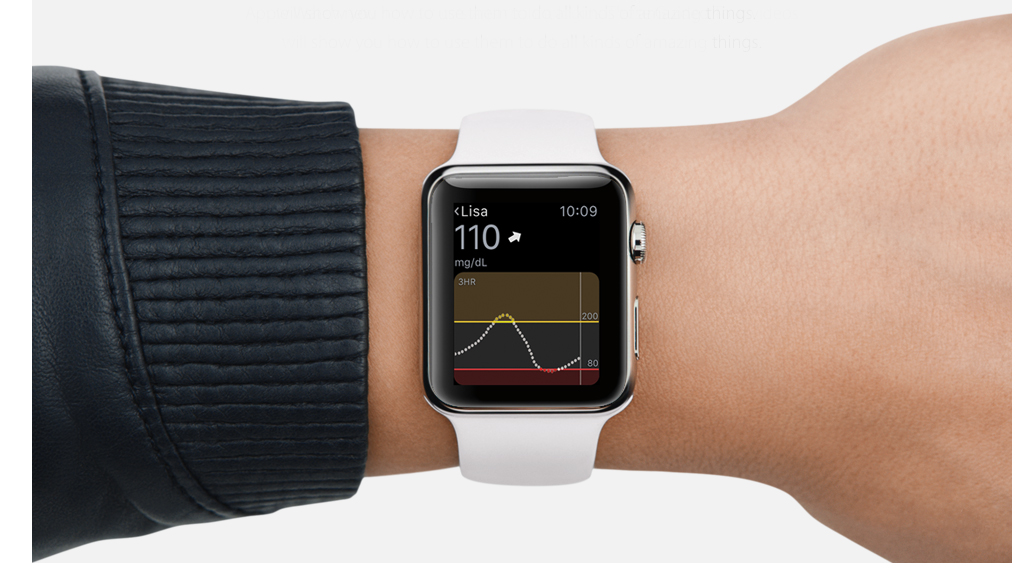
Apple Watch and Diabetes
Tim Bajarin has a fantastic piece over at Techpinions on his experience using the Apple Watch with the Dexecom 5 diabetes monitor. In his piece, he discusses the benefits of the Apple Watch when paired with the Dexecom sensor.
Here’s how it works:
It uses a sensor and a BLE transmitter that sits on top of the sensor. Each sensor lasts seven days. The sensor has a small needle-like prong that is the thickness of two human hairs. It embeds into my stomach (I hardly feel it going in) and monitors my blood sugar fluids 24X7.
Fascinating. It’s not as accurate as pricking your finger he says, but he says it’s “pretty close.” Still, the fact that he can see right his blood sugar levels right on his wrist 24/7 is truly amazing.
Bajarin Continues:
My actual target with my blood sugars are to keep them under 160 and no lower than 80. With this app, I can set alerts that let me know when my numbers go over 160 or under 80 and it gives me a loud beep as a warning. I actually try to keep the numbers under 140, and this app really helps do that. Using the Dexcom 5 sensors and the Apple watch app, I now always know what my blood sugar ranges are.
For those with Type 1 diabetes that are insulin dependent, the Dexcom 5 and the Apple Watch changes their lives. The alarms alone are worth the price. Yet, as a Type 2 diabetic, this device has also become a life changing tool and, at least for me, the combination of this sensor system and the Apple watch is now something I can’t live without. Yes, I could go back to only using pin pricks but I could never do this all day, every day. With this new health monitoring device and the Apple Watch, I have one of the most effective tools I have ever used to help me deal with this disease in a highly proactive manner.
We’re only a year into the Watch and we’re already seeing some amazing progress. You may not appreciate this if you don’t have diabetes, but as Bajarin points out, over 29 million people in the U.S. alone have to deal with this every day.
Imagine where we’ll be 5 or 10 years from now. This is the future of the Watch.